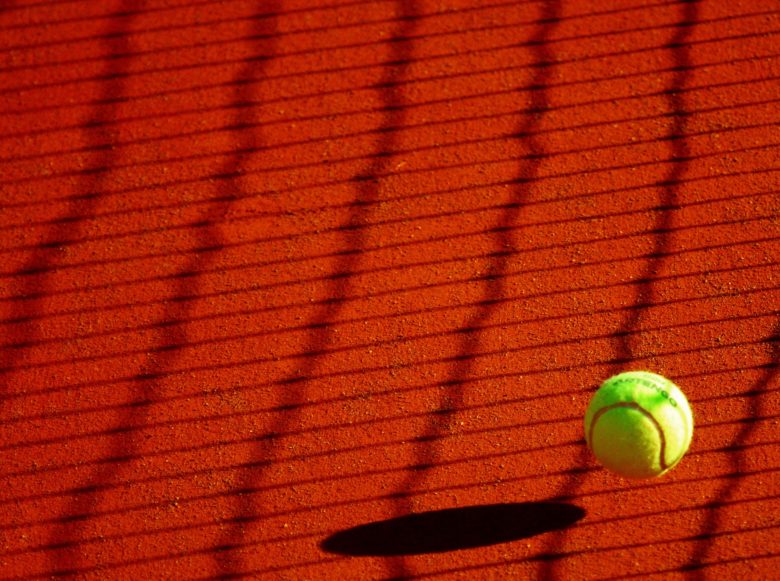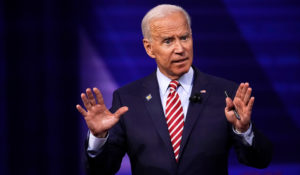While the rest of the world was (justifiably) going bonkers over Tiger Woods’ first triumph at a major since 2008, I was taking a step back and marveling at the current state of golf as a whole. Though Woods’ decade-long struggle to return to form undeniably left a gaping hole in the sport, over the last five years or so the sport has been flush with promising young golfers who make every Major Sunday an exciting event. But in the midst of all of the golfing joy, I was also thinking about tennis. And before I can get to golf, that’s what I need to talk about.
I love tennis, and I have for many years. We have been blessed to have lived through an era of unparalleled tennis greatness, bearing witness to the three-headed monster of Roger Federer, Rafael Nadal, and Novak Djokovic, who still absolutely dominate the sport to this day. But with their run approaching 15 years, and very much still going, it becomes inevitable to ask: at what point does unquestioned brilliance end and a weak field begin?
Travel back to the 2005 French Open. Coming into this tournament, Roger had four Grand Slam victories, and Rafa and the Djoker each had zero apiece. Since then? The three of them have combined to win 48 of 56 majors. That’s 86% of them over the last 13 years.
Again, we’re likely talking about the three greatest men’s tennis players of all time. Roger (20), Rafa (16) and Novak (15) rank No. 1-3 respectively in Grand Slam titles in the modern era. But each of the three, in the last 5-7 years, has gone through a period of turmoil that has typically signaled the end of one’s career – even for an all-time great. Be it injuries, personal issues, or both, none of these three legends should still be winning at the highest level.
The wheels began to come off for Roger Federer in 2010, after his Australian Open victory to open the season. Federer was 28 and approaching the autumn of his tennis career (most men’s players do not make it particularly deep into their 30s). Nadal and Djokovic, a few years younger than he, were about to embark on two of the greatest individual seasons in tennis history over the next two years respectively (Novak’s 2011 may be the single greatest calendar year in tennis history, even keeping Rod Laver’s two calendar Slams in mind). Federer managed to squeak out a Wimbledon win in 2012, but his two-and-a-half-year gap between major victories was dumbfounding.
Then, the day after the 2016 Australian Open, Federer was drawing a bath for his twin daughters when he turned and heard a loud click in his knee. He was 34 years old, and now had torn cartilage that required surgery. If tearing up your knee while drawing a bath for your children isn’t the literal personification of Father Time, then I will never know what is. Back injuries surfaced, then the knee issues resurfaced, and Federer ended up having to skip the 2016 Summer Olympics and the U.S. Open. That year would become the first season since 2000 that Federer failed to win a title of any kind, and he would eventually fall out of the top 10 for the first time in 14 years. By now he was 35, and he was done.
Except he wasn’t. Roger’s won three Grand Slam titles since then, including his triumphant return to greatness at the 2017 Australian Open that saw a fitting finals match-up against Rafael Nadal. For his part, Rafa hit a three-year title drought himself after the 2014 French Open while dealing with wrist, back, and knee injuries. Nadal’s physical style of play has always given him injury issues, but this seemed different – when Nadal’s not winning at the French, he’s not winning anywhere. And yet, just like Roger, Nadal seems to have found the fountain of youth since the beginning of the 2017 season – he has three titles since then as well, including each French Open championship.
Djokovic went absolutely cold after his 2016 French Open title. It would be more than two years before he would win his next title, bogged down by an elbow injury, but also by turbulence in his personal life, as rumors of a split from his wife were a constant during that period. But now look where we are – he’s won the last three majors! Shit, all three of these guys have won three Grand Slam titles since being left for dead.
So why did I go through all the trouble to set the stage above? Because while three of tennis’ all-time greats were struggling, essentially no one took advantage. Stan Wawrinka and Andy Murrary are the only ones who had consistent success during this period, each winning three Grand Slams apiece between 2012 and 2016. Will they one day find themselves enshired in tennis’ Hall of Fame? Probably. Will they ever come up in lists of tennis titans? Negative. Other than that? Marin Cilic stole a U.S. Open in 2014 when no one else wanted to win it. That’s it.
And yet, over the last several years, we keep hearing of the next wave of great tennis players that’s supposedly on the rise. John Isner was the great American hope, but he remains horribly lost when he’s not on serve. Australian Nick Kyrgios was supposed to change the game with his power and flare, but he’s made it apparent he’d rather be playing basketball. Everyone went nuts when American Sam Querrey beat Djokovic in the third round of Wimbledon in 2016, but he currently sits at No. 66 in the ATP rankings. Now everyone’s talking about Denis Shapovalov and Alexander Zverev. Maybe they’ll become the next Sampras and Agassi. Maybe they won’t.
So, I kept all of this in mind while I was watching Tiger return to form on an unforgettable Masters Sunday last week. Though there were similarities to what I have detailed above – a legend of the sport, written off after personal issues and injury after injury, finally summiting the mountain again while fending off an entire generation of players he helped inspire – there were also so many differences. Unlike tennis, golf’s men’s field has arguably never been better or more exciting.
First you have the overachievers. You have Brooks Koepka, flexing out of his shirt, winner of three of the last eight majors, including back-to-back U.S. Opens. Jordan Spieth has struggled recently, but only needs a win at the PGA Championship to complete a Career Slam. Same with Rory McIlroy, but all he needs is the Masters. And don’t forget that Bubba Watson has two green jackets.
Then you have underachievers – guys who have only won one Major but are always in the hunt for more: Dustin Johnson, Justin Rose, Justin Thomas, Francesco Molinari, Jason Day, Webb Simpson. And then you have the guys ready to break out: Tommy Fleetwood, Rickie Fowler, Tony Finau, Xander Schauffele. What about personalities like: Andrew “Beef” Johnston, Miguel Angel Jimenez, and Boo Weekley? And don’t forget about Phil.
A ton of these guys were at the top of the leaderboard last Sunday as Tiger surged past all of them. It not only made for a more exciting Masters conclusion, but a more fulfilling one – for Tiger and for all of us watching. And for the first time in more than a decade, Tiger seemed to intimidate his opponents. But that’s a different story.
Frankly, I’m not sure whether this article is about tennis or golf. I’m not really sure it matters. But watching Tiger’s first victory at a major in nearly 11 years seemed so much more absolute than any of tennis’ recent comebacks. It’s fruitless to question the greatness of Roger Federer, Rafael Nadal, or Novak Djokovic. But when those three have once again combined to win the last nine majors, it’s impossible not to wonder: at what point will someone step up to challenge them?



